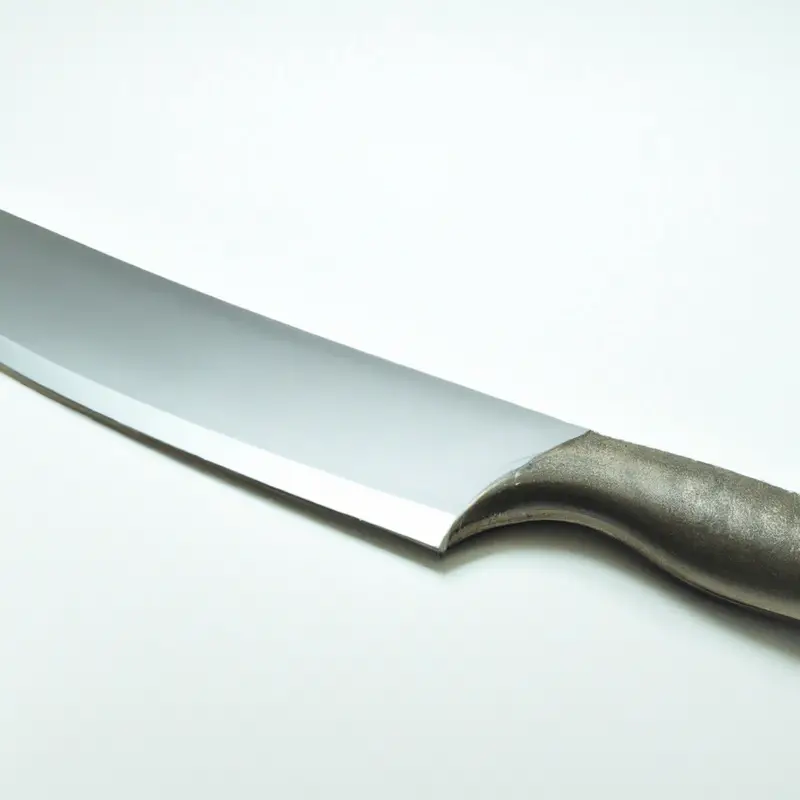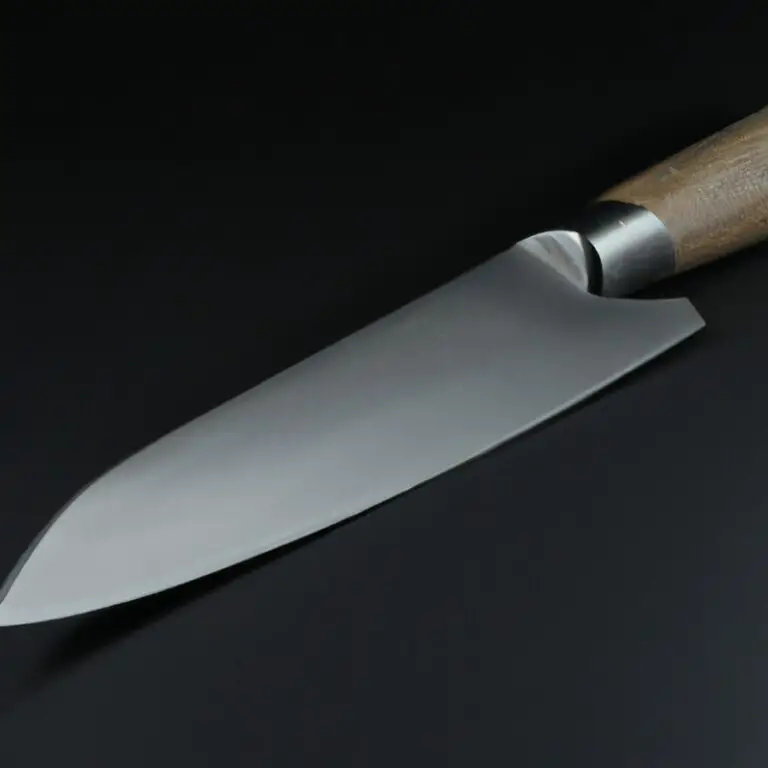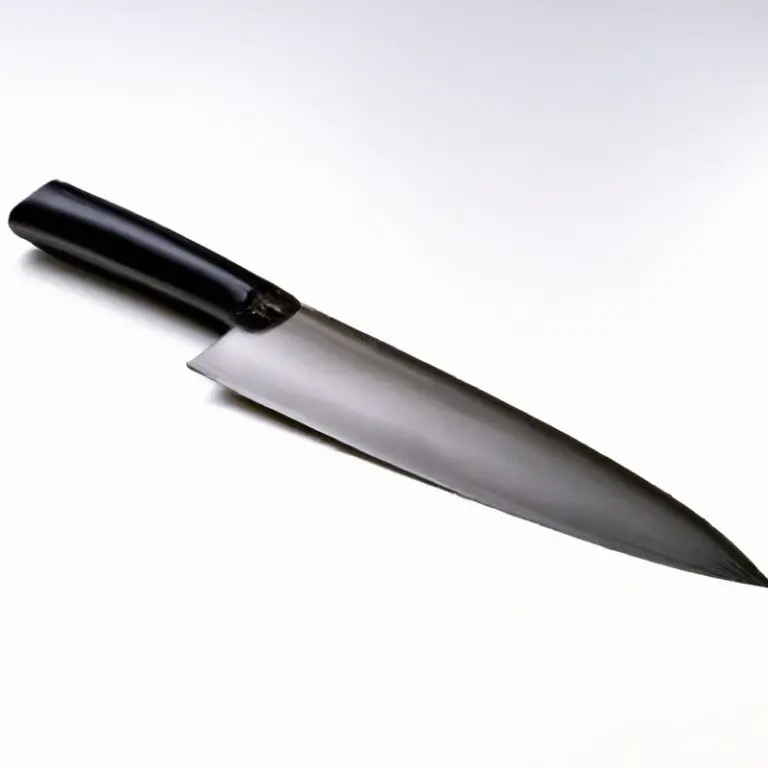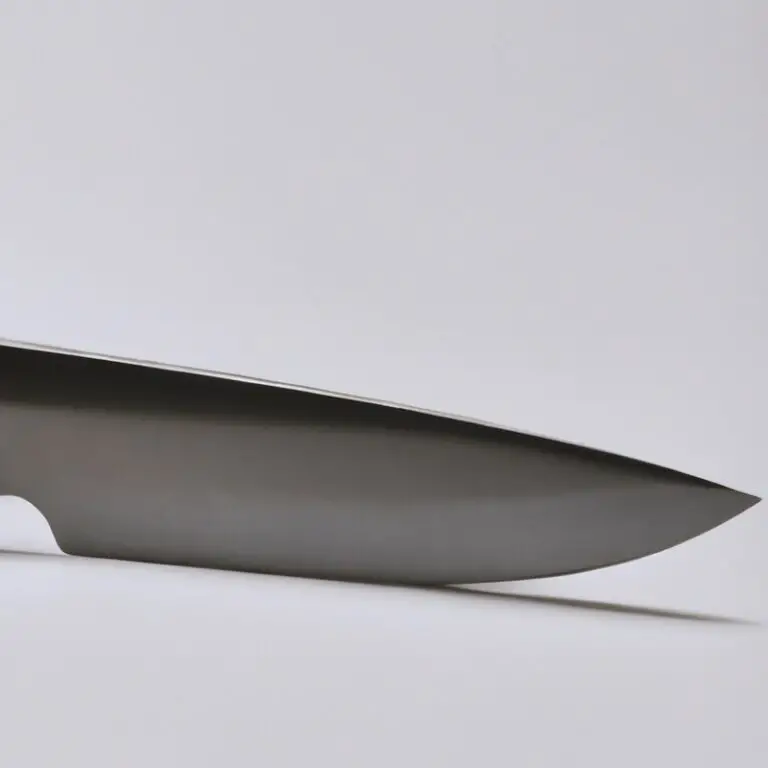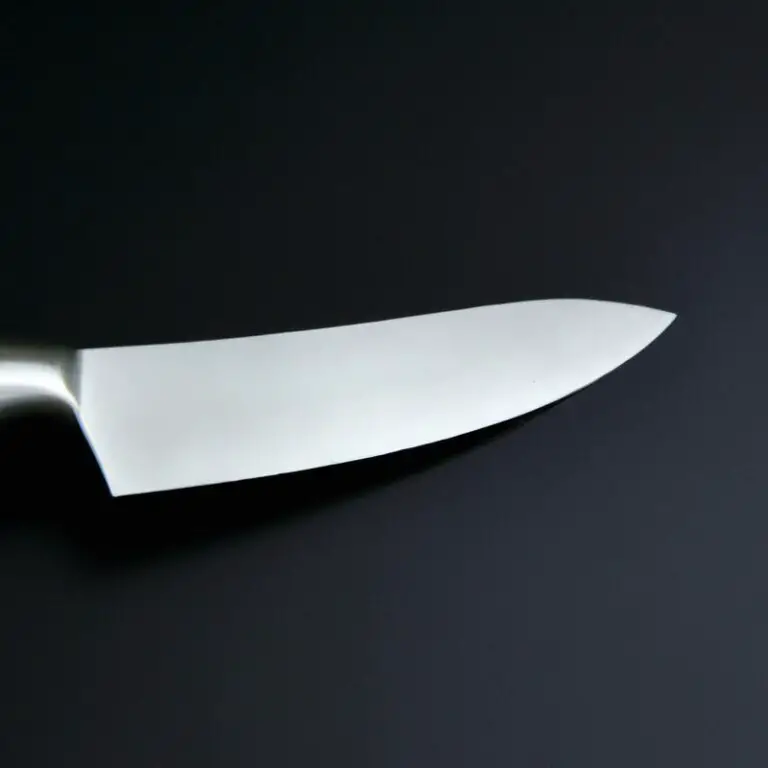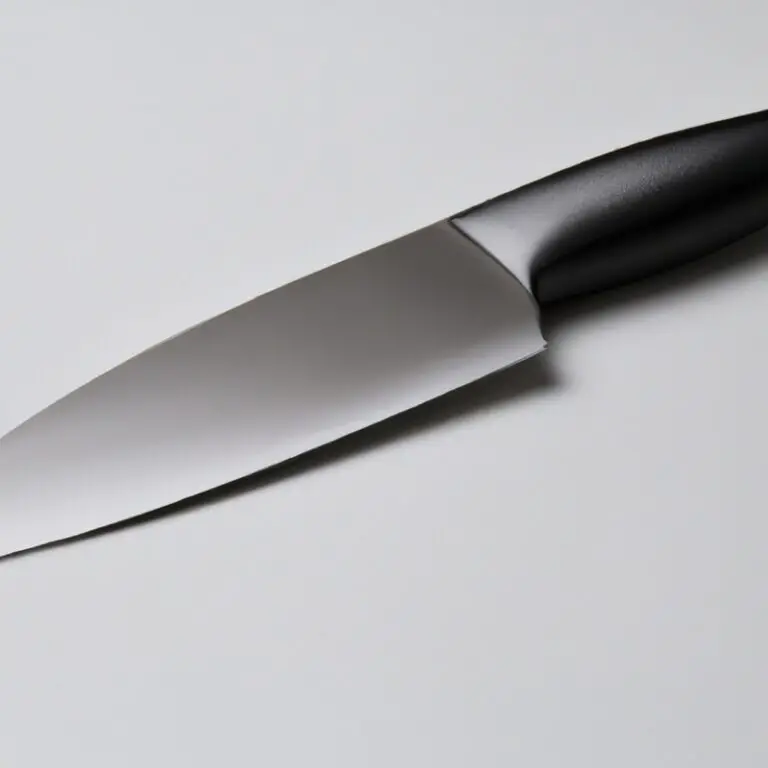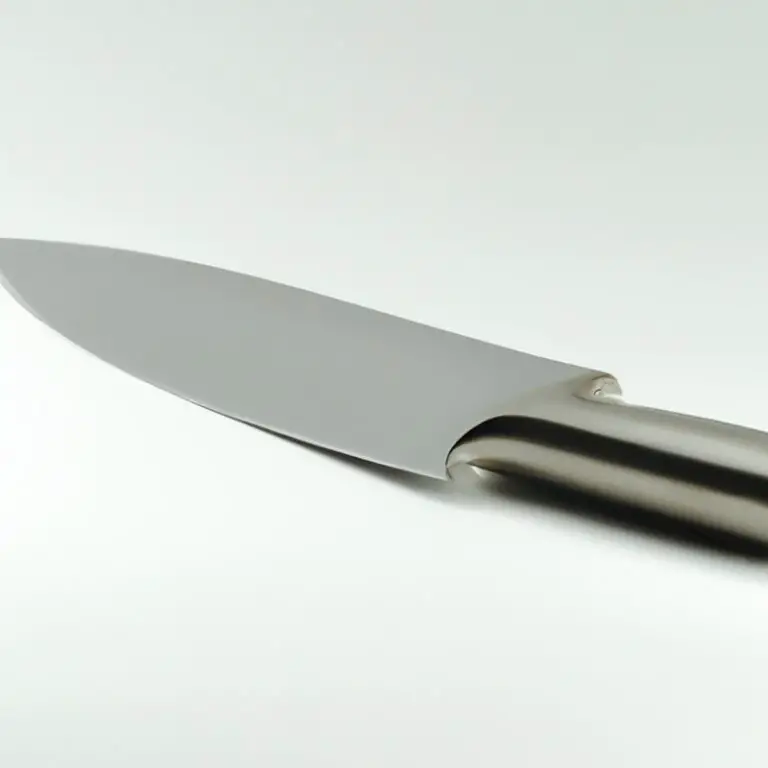What Are The Main Features Of a Santoku Knife? Slice With Precision!
Key Takeaways:
- A Santoku knife’s main features include a shorter and wider blade, a flat edge for precise slicing, and a curved blade for chopping.
- The Santoku knife is a versatile kitchen tool for chopping, slicing, and dicing a range of ingredients including meat, vegetables, and fish.
- When choosing a Santoku knife, look for high-quality materials such as stainless steel and a comfortable, ergonomic handle for safe and comfortable use.
- To prolong the lifespan of your Santoku knife, it is essential to sharpen and maintain it regularly using a sharpening stone or honing rod.
Are you tired of struggling with your basic kitchen knife during meal prep? Look no further than the Santoku knife.
Originating in Japan, this versatile blade has gained popularity worldwide for its unique design and exceptional cutting capabilities.
From its blade to its handle, steel to size, this knife has several distinct features that set it apart from other kitchen knives. As a professional chef with extensive experience using Santoku knives, I am excited to share my knowledge on the many features and benefits of this essential tool.
| Feature | Description |
|---|---|
| Blade Shape | A wide, slightly curved blade with a tip that curves down to a point |
| Blade Length | Typically between 5 and 7 inches |
| Granton Edge | Scalloped pattern on the blade reduces sticking of food to the knife while cutting |
| Tapered Blade | The blade is thinner at the tip and widens towards the handle, allowing for easier slicing and chopping |
| Flat, Wide Blade | Allows for crushing and scooping ingredients while also providing a wider surface area for cutting |
| Lightweight | Easier to handle and control during use compared to heavier knives |
Understanding the Santoku Knife: Its Origins, Design, and Purpose
The Santoku Knife is a Japanese-originated multipurpose kitchen blade that is widely used all over the world. Santoku means ‘three virtues’, which refers to its ability to slice, dice, and mince with ease.
Originating in the early 1940s in Japan, the Santoku Knife features a shorter and wider blade than the Western Chef’s Knife and is designed to handle a wide range of ingredients, including fish, meat, and vegetables.
Its blade features a Granton edge, which reduces friction and sticking when cutting, and its flat edge allows for precise cutting and chopping. The Santoku knife’s design includes a rounded spine and a sturdy bolster to provide balance and support.
The lightweight construction and ergonomic handle design make it an easy-to-use tool for both home cooks and professionals.
Unraveling the Anatomy of a Santoku Knife: Blade, Handle, and Tang
The Santoku knife has three main components: the blade, handle, and tang. The blade is typically around 7 inches long, with a flat edge and a curved tip.
It is designed for chopping, slicing, and dicing, making it a versatile tool in the kitchen.
The handle is ergonomically designed, with a comfortable grip that allows for precise control of the knife. It is usually made from wood, plastic, or composite materials.
The tang is the part of the knife that extends into the handle, providing balance and stability.
A full tang extends the entire length of the handle, while a partial tang is shorter. The construction of the blade, handle, and tang all contribute to the overall performance and durability of the Santoku knife.
Steel Matters: The Different Types of Steels Used in Santoku Knives and Their Advantages
Santoku knives are available in different types of steel, each with its own benefits. The most common ones are high-carbon stainless steel, VG-10 steel, and Damascus steel.
High-carbon stainless steel is durable, won’t rust easily, and stays sharp for longer periods.
VG-10 steel is robust, hard, and can hold a sharp edge for an extended period. Damascus steel is visually appealing, and the layered composition provides better strength and sharpness retention.
When choosing a Santoku knife, consider your usage and preference for the type of steel that best suits your needs.
Getting a Grip: Handle Shapes, Materials, and Ergonomics in Santoku Knives
A Santoku knife’s handle plays a significant role in its overall functionality and comfort. The handle’s shape, material, and ergonomics determine the knife’s balance, grip, and maneuverability.
Handle Shapes: Santoku knives come in different handle shapes, including traditional Japanese D-shape, Western-style handle, octagonal, and oval.
Each shape offers a unique grip suited to the user’s hand size and cutting style. Materials: The handle material can be wood, plastic, or metal.
Wood provides a comfortable grip, while plastic and metal offer durability and easy maintenance.
Ergonomics: A Santoku knife’s handle should fit comfortably in the user’s hand, allowing for a proper grip and ease of movement. Ergonomically designed handles reduce hand fatigue and prevent slipping.
When choosing a Santoku knife, ensure that the handle’s shape, material, and ergonomics suit your preferences and needs.
A comfortable grip will make all the difference in your cutting experience.
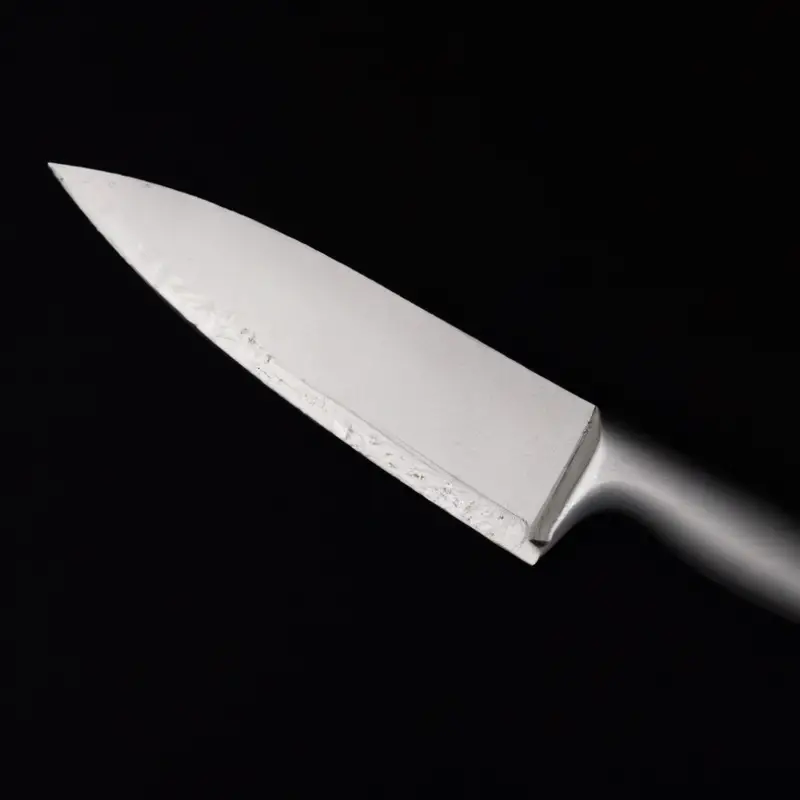
Size Does Matter: The Ideal Blade Length for Different Uses of a Santoku Knife
The ideal blade length for a Santoku knife depends on the intended use. For general use, a blade length of 7 inches is suitable.
However, for those who prefer a larger blade, 8 inches is also an option.
If the Santoku knife is intended for tasks that require precision, such as slicing vegetables, a shorter blade of around 5 inches is ideal. A shorter blade allows for better control and maneuverability.
Ultimately, the blade length of a Santoku knife should be based on personal preference, comfort, and the intended use.
The Edge is Everything: The Importance of Sharpness and Honing in Santoku Knives
The edge is everything in a Santoku knife, and sharpness is crucial for achieving precise cuts. A sharp knife allows for effortless slicing, dicing, and chopping, reducing the risk of accidents in the kitchen.
Honing the blade regularly maintains its sharpness and prolongs its lifespan.
There are different methods to sharpen and hone a Santoku knife, including manual honing with a honing steel or sharpening with a whetstone. Using proper techniques and tools to sharpen and hone your Santoku knife is essential to ensure optimal performance and longevity.
A dull or damaged edge not only limits the knife’s functionality but also poses a safety risk in the kitchen.
Therefore, investing in a high-quality Santoku knife and taking care of its edge through regular honing and sharpening is crucial for any aspiring chef or home cook.
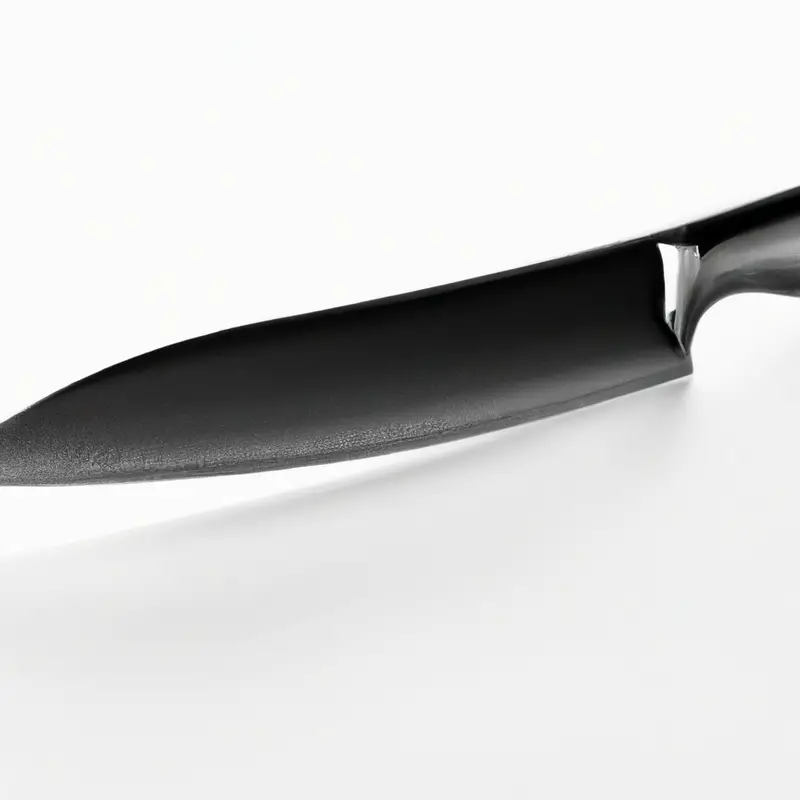
Mastering Different Cutting Techniques: The Versatility of a Santoku Knife
The Santoku knife’s versatility lies in its wide blade that can handle various cutting techniques. It can perform slicing, dicing, mincing, and chopping tasks effortlessly.
Its sharp and thin blade allows for precision cuts, making it suitable for cutting meats, vegetables, and fruits.
The flat edge of the blade makes it easy to push the food without lifting it from the cutting board. The Granton edge, which has small dimples on the side of the blade, prevents sticking, especially when cutting through wet or sticky foods like cheese, tomatoes, or onions.
To master different cutting techniques, practice with a Santoku knife and learn the proper grip and angle.
With its versatility, the Santoku knife can replace other kitchen knives, making it an essential tool for any home cook or professional chef.
The Best Cutting Board for Santoku Knives: Tips and Recommendations
When it comes to choosing a cutting board for your Santoku knife, it’s essential to consider three primary variables: the material, size, and thickness. The best cutting boards for Santoku knives are those made of hardwood such as maple, walnut, or cherry.
Hardwood boards are durable and resistant to scratches, ensuring that the knife stays sharp for longer periods.
Avoid glass, marble, or ceramic boards, which are too hard and can damage the knife’s edge. Plastic boards are too soft and can develop deep grooves that harbor bacteria, compromising hygiene.
A cutting board should also be large enough to accommodate the size of the knife, allowing you to make efficient cuts while minimizing accidents.
A 12 x 16 inches board is a good starting point. Choose a board with a thickness above 1 inch to provide the necessary support and stability, especially for heavy-duty tasks.
Remember to clean your cutting board thoroughly after each use using hot soapy water to prevent bacterial growth.
Avoid soaking or putting it in the dishwasher, as this can cause warping and cracking. By following these tips, you’ll ensure that your Santoku knife performs optimally, and your cutting board remains in good condition, enhancing your kitchen experience.
Maintenance and Care for Your Santoku Knife: Essential Dos and Don’ts
To keep your Santoku knife in good condition, there are a few maintenance and care practices you should follow. Here are some essential dos and don’ts: Dos:
- Hand wash your knife with warm, soapy water after each use.
- Dry your knife immediately with a towel to avoid rust or corrosion.
- Store your knife in a knife block, sheath, or magnetic strip to prevent it from dulling or getting damaged.
- Use a honing steel regularly to maintain the sharpness of your knife.
- Sharpen your knife when it becomes dull using a whetstone or professional sharpening service.
Don’ts:
- Don’t put your knife in the dishwasher as the high heat and detergents can damage the blade and handle.
- Don’t leave your knife wet or soaked in water as it can cause rust or corrosion.
- Don’t use your knife on hard surfaces like glass or granite as it can damage or chip the blade.
- Don’t use your knife to cut frozen or hard foods as it can dull or damage the blade.
- Don’t use a honing steel as a substitute for sharpening your knife as it won’t remove any metal from the blade.
By following these maintenance and care tips, you can keep your Santoku knife in excellent condition and enjoy its benefits for years to come.
Choosing the Right Santoku Knife: Factors to Consider Before Making a Purchase
When it comes to choosing the right Santoku knife, there are a few factors to consider before making a purchase. Firstly, decide on your budget, as prices can vary widely between brands and models.
Consider the type of steel used in the blade, such as high-carbon or stainless, as this can affect the knife’s durability and sharpness.
Additionally, look for a comfortable handle that fits your grip well, as this can impact your control and precision while cutting. Consider the blade length that best suits your needs, with 5-7 inches being the most common for home use.
Lastly, take into account any additional features such as a bolster or full-tang construction for added strength and balance.
By considering these factors, you can make an informed decision and choose the right Santoku knife for your needs.
Final Verdict
The Santoku knife is a versatile and efficient kitchen tool that should be a staple in every chef’s arsenal. From its Japanese origins to its unique blade design, handle materials and ergonomics, and the different types of steel used, we’ve explored the main features that make the Santoku a cut above the rest.
Whether you’re using it for slicing, dicing, or chopping, honing the blade, or maintaining the handle, this guide has provided you with actionable insights and practical takeaways to master the art of Santoku knife usage.
By choosing the right Santoku knife for your needs and taking proper care of it, you can elevate your cooking game and enjoy a lifetime of precision cutting. Remember, a Santoku knife is more than just a kitchen tool – it’s a testament to craftsmanship, innovation, and passion for culinary excellence.

